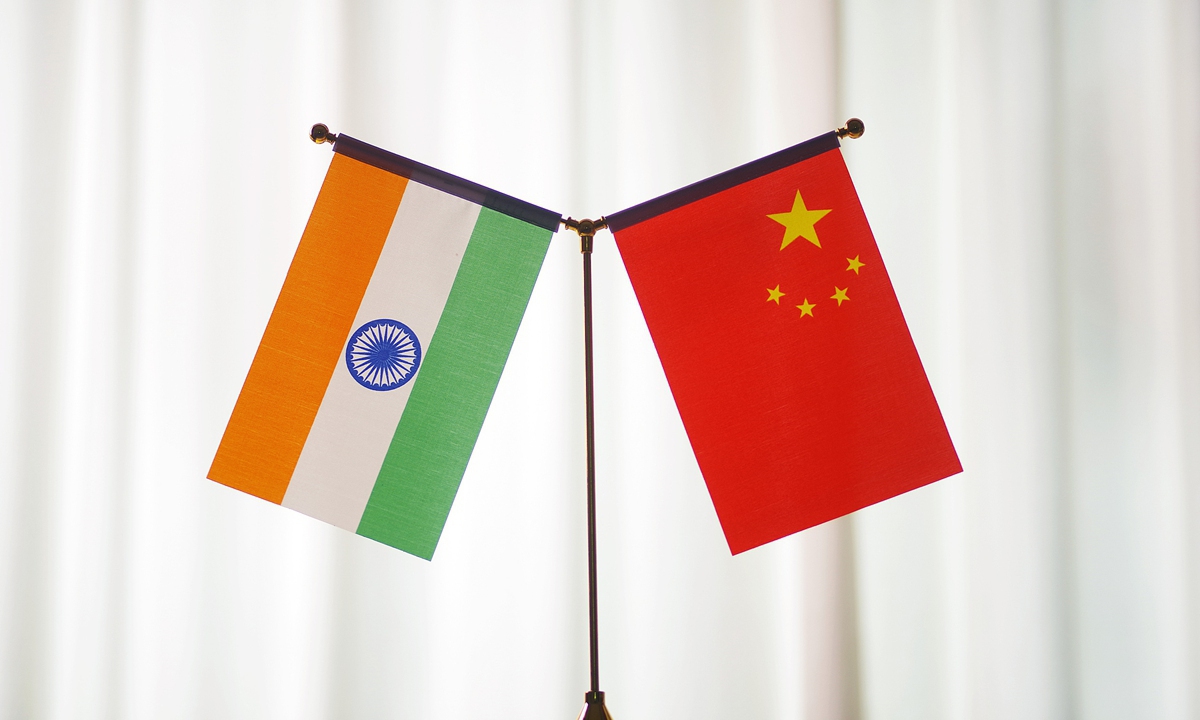
China India Photo:CFP
"There is no path to peace; peace is the path" - Mahatma Gandhi. After four years of a deteriorating diplomatic environment, there is new hope for the relationship between the world's two most populous nations and neighbors.
Recently, China and India agreed to accelerate the negotiation process and accommodate each other's legitimate concerns to find a solution to the border issue that is mutually accepted by both sides. Meanwhile, it was also reported that the Indian government was considering relaxing restrictions on Chinese investment and visa restrictions for Chinese citizens.
The border incident in 2020 resulted in calamitous repercussions in terms of public sentiments, commerce, investments, diplomacy at the highest levels and people-to-people exchanges. So, why are we witnessing this sudden shift in attitude, with India emphasizing progress on the border issues and even considering adjusting attitude toward foreign direct investment (FDI) from China? Three reasons: geopolitical realities such as the rise of a multipolar world, the imperious attitude of the US, and China's inimitable prowess in technology and manufacturing.
Just as President Xi Jinping said, we are living through changes unseen in a century. We are witnessing the end of the American century and the rise of a multipolar world. However, human psychology has a proclivity to believe that the past and present are predictors of the future. Thus, for many years, Indian think tanks and the media bought into the narrative of American exceptionalism and its enduring hegemony. The enormous success of Indian immigrants in the US also contributed to this biased view.
However, the shifts of economic, technological and geopolitical powers from the West to the East have been unmistakable. In terms of purchasing power, China is about 25 percent larger than the US, BRICS is bigger than G7, and developing nations have surpassed developed economies. According to the IMF, two-thirds of global economic growth comes from Asia, where the middle class continues to grow rapidly. Meanwhile, the US pretends to be No.1 by borrowing trillions of dollars and creating financial bubbles.
The final blow to imperialism came when the combined efforts of the US, EU and NATO failed to crush the Russian economy, isolate Russian president, or defeat the Russian military over the last two years and a half. Instead, the sanctions the sanctions had unintended consequences, leading to the expansion of BRICS and an acceleration of de-dollarization.
Moreover, Indians began to realize that being an "ally" of the US means being a vassal. For example, when Prime Minister Narendra Modi visited Russia last month, the entire American establishment was enraged, and the US ambassador to India warned India that there was no such thing as strategic autonomy. Plus, for more than a year, the US has been engaging in a hybrid war against India - including supporting Sikh separatists, and criticizing the country for its perceived lack of religious and press freedoms.
Furthermore, India had been lured by the grand promises of the Americans. This seemed tantalizing especially when the COVID pandemic broke out. The delusional propaganda from US media, politicians and even tech executives hyped the concept of decoupling from China, the world's industrial powerhouse.
For two years, the grandiose buzzwords on everyone's lips were re-shoring, friend-shoring and near-shoring. Countries such as India, Vietnam and Mexico were supposed to be the big winners in this, who would soon replace China. The naïve Washington consensus was that plentiful cheap labor is all it takes to succeed in manufacturing.
However, companies like Apple soon found out how difficult it was to scale their production in India. India's imports from China keep rising - from $70 billion in 2019 to about $100 billion in 2023. China's share of India's imports in critical sectors such as chemicals and pharmaceuticals, electronics and machinery ranges from around 30 percent to 40 percent.
To be as successful as China in manufacturing is a mammoth task. It involves infrastructure, transportation, energy, an ecosystem of complementary industries, vertical supply chain integration, urbanization, education, skilled workers, focus on speed and scale, R&D investment, innovation, automation and robots, smart industrial policies, long-term planning, FDI and much more. There are no shortcuts to attain such comprehensive expertise.
Finally, the Indian establishment is starting to extricate itself from the American echo chamber. Economic pragmatism is starting to replace political expediency. The formula for success has already been defined and proven by China and other Asian Tigers over the last few decades - manufacturing, investment (local and FDI) and exports. India needs FDI, expertise, technology transfer and guidance.
And the solution to India's needs is obvious: China.
The India-China partnership can be a win-win opportunity. On the flip side, India has 200 million young people aged 15-24, and the wages are much lower than in China. Additionally, India has a rapidly growing middle class, all of whom are potential customers for Chinese companies, such as Xiaomi, BYD, Midea and Alibaba. Of course, India must ensure a stable and welcoming environment for Chinese companies and investors.
There are hopeful signs suggesting that there likely will be a reset in India-China relations in the coming months. I hope that the trend and momentum can continue. If the two ancient civilizations and neighbors focus on the five principles of peaceful coexistence that they enumerated 70 years ago, the coming generations of Chinese and Indians will truly enjoy an Asian Century.
The author is a geopolitical analyst, columnist, blogger, podcaster, and writer based out of Bangalore, India. His work can be found on Substack, X and more. opinion@globaltimes.com.cn




